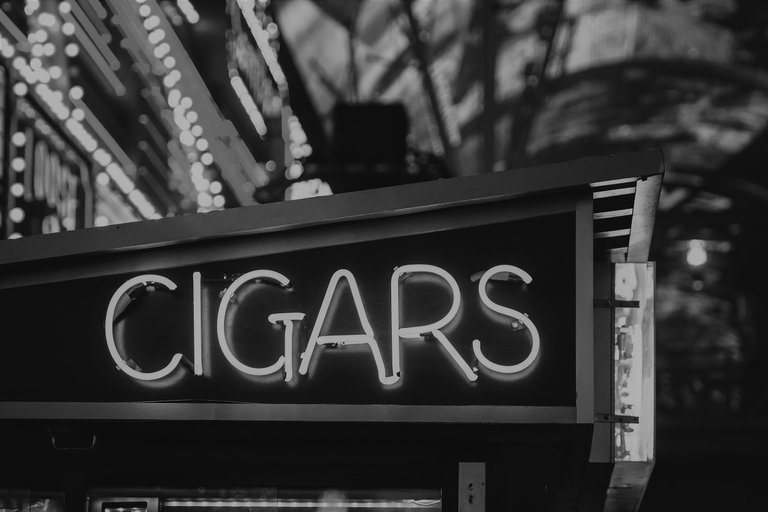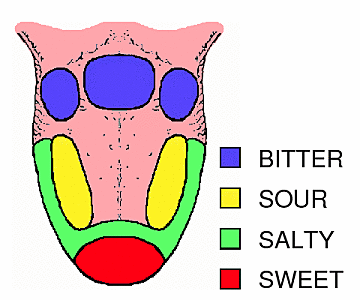
How would you describe the flavor of your favorite cigar? Really think about it for a moment, and while you do, see if what you read changes how you'll answer.
While you think that describing the flavor of something is rather simplistic, all of that goes out the window when we really think of how to describe the flavor you get from those finely rolled tobacco leaves. It's what separates the good from the great, the very thing that allows us to find our go-to for the specific moments in time.
I'll be honest, this was definitely something I didn't really pay much attention to until recently. I'd always just go in thinking 'Oh that one tasted good, let me get it every time I go in and not pay attention to any other detail of my pallet, the color of the leaf that was rolled, or even how it may have smelled.
When we discuss the flavor of a good cigar with our fellow enthusiasts, we should be really looking at a combination of where the leaf was grown, how our flavor pallet responds to the leaf on our tongue, the scent that comes from the unlit cigar, and finally how it finishes.
I do want to note that we are only discussing the flavor of a cigar. Not the quality of them. It's important to ensure that we are separating the two schools as one does not directly correlate to the other. We could smoke the finest quality cigar in the world, but if the flavor profile doesn't match our needs then we chose poorly.
Now back to determining the flavor of a stogie.
Let's break down each of the four areas to really understand how we should judge.
Where the leaf was grown:
Much like we discussed in the first article in this series, The History of Cigars, leaves can come from many areas around the world. We should keep in mind that each respective area may produce the leaf slightly different, and they also differ in environmental factors. Additionally, larger producers may also be growing variations of leaves in close proximity that infuse each other to provide a hybrid of flavors. I mean, just look at the map to see where in the world tobacco leaves are grown!

How our flavor pallets respond:
So this is the area that I ignored the most when becoming more accustomed to cigars. Wrongfully so as this is probably the second most influential. We are going to spend a bit of time discussing this. When it comes to the tongue, it can really only detect a specific range of flavors. Those main areas are bitterness, tartness, sweetness, brine, and savoriness. Let's look at each one of these to better understand what mean.Bitterness is typically a flavor we acquire when something is very unpleasant to us. Some things that may hit us with a burst of bitterness could be coffee, citrus fruits, or chocolate.
Tartness is different than bitterness, in that, when something is tart to us we detect a higher acidity level. Most of our cigars will not fit in this category; However, this is called out to help us understand that if we do not properly store them then they incorrectly age. This is what can turn that magical wonder extremely tart.
Sweetness, oh sweetness. A taste that is very pleasurable to our taste receptors. In order for our pallet to detect this, two of the major receptors must activate. More times than not, we will not get a true sweetness from the direct taste, but more from the aroma which can in turn impact the way we receive the flavor. More to come on this in just a brief moment.
Brine, or saltiness, can be activate in the presence of sodium or other alkali metals. Most often picked up in cigars that are of Cuban descent because of the high concentration of lithium in Cuban soil.
Savoriness! Who doesn't savor that fine flavor offered by this magic! We receive this mainly by amino acids from things that are high in proteins.

Understanding each of these areas, and how they interact with one another, then we can begin to better describe how the leaf rolls off of our tongue.
The scent that comes from an unlit cigar:
Oh the great olfactory, or that sense of smell. Countering our tongue, which as we learned is only open to five qualities, our sense of smell is open to hundreds of qualities. This makes this factor the most influential. This is really where we 'receive' most of the flavor from a cigar. What I mean by that is that we tend to smell things before we place them on our tongue, and in doing so it drives how we are open to understand what we place in our mouths. If we smell something that is very bitter, then we are typically unwilling to move forward with ingesting it.This category outlines an unlit cigar to specifically call attention to the fact that we aren't speaking of the aroma from the cigar. That will fall under how it finishes. We are merely speaking of the cigar's scent while you are assessing. During this part, take a big whiff of that wonderful stick and look for words like spicy, peppery, sweet, harsh, burnt, earthy, woody, cocoa, roasted, aged, nutty, fruity.

How it finishes:
Now we are finally on to the finish of a cigar. We are past the part of how to smoke a cigar, which will come in a later article, but for this we want to understand what it means to finish off the flavor profile we have started. It's okay to change our initial assessment as we may detect hints of subtleties that we didn't expect prior.Here we are really looking for lasting flavor effects that make us go, 'damn that was amazing', or 'close but no cigar', and yes pun intended. You see, when it finishes just right, we know. This is where we are really able to give our assessment of quality of the cigar, which of course you guessed it, will also be a contributor of a future article. This series is one that will be a good long draw, pun intended again, but I promise I'm really not trying.

Now, is your answer to the question that started this article the same? Mine certainly wouldn't be. Many times we forget that there are so many factors going into how we taste things like a fine wine, a greatly cooked and infused dinner dish, or even our finest cigar in the humidor. Next time you sit down to enjoy a fine stick of rolled tobacco leaves, don't forget that it is an experience you should enjoy with each and every puff.
As always, thanks for tuning in, and that is your Daily Dose of Dapperness!

Hi, my name is Blake. I'm a true fan of the 1950's style gentleman, a father, adventurer, and all around Curious George!
Connect with me on social:
Be Sure to Check Out the Site: